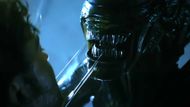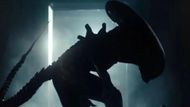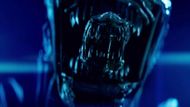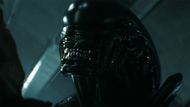Having first appeared in Ridley Scott’s Alien (1979), the Xenomorph has come to personify the uncanny and the raw fears of invasion, mutation, and predation. Over decades, the Alien franchise has seen fit to augment, detail, and incrementally unveil more of the history behind this creature, but has done so with such diligence that there is still enough mystery to leave fans theorizing and researchers speculating.
The most interesting part of the Xenomorph is the network of mythology that overlays it. Directors, writers, and canon lore consultants have gone nearly archaeological, digging up clues across movies, comics, novels, and eventually games. From the initial facehugger experiment on board the Nostromo to the bioengineering labs of the Engineers and the dreadful tests of David in Prometheus and Alien: Covenant, each story has provided interesting insights into how the organism was created.
Notably, the revival of the series in recent years via Alien: Covenant (2017), Alien: Romulus (2024), and a new FX series, Alien: Earth, has renewed interest in the lore among fan communities and even academic circles. Academic essays, evolutionary biology critiques, and professional opinion pieces have all added to this aspect of discussion, highlighting the philosophical and scientific aspects of the creation of the Xenomorph.
So, let’s sum up the history of the Xenomorph by looking at all the major canonical and credible speculative sources.
Theories of natural evolution: Xenomorph Prime

Xenomorph Prime is a theory in the Alien Expanded Universe, particularly as presented in published novels and comic series, that the Xenomorph species may have evolved naturally on a distant, barren homeworld. In this hypothesis, the Xenomorph types that originally evolved under harsh environmental conditions developed their unique biomechanical bodies and survival instincts unmatched anywhere on Earth.
On Xenomorph Prime, it is said that the creatures developed into apex predators, consuming the rest even within their own hives. Their life cycle allowed them to grow in population and dominate brutally, and display a naturally ruthless process of adaptation.
Novels like the Aliens: Genocide series show inter-hive conflict and provide extensive descriptions of Xenomorph behavior, placing them as the products of evolutionary horror. Notably, this evolutionary theory receives little but continuing support in fan circles and even a few lore advisors, although not always in the canon of the core film.
The Engineers: Architects of nightmares

The mysterious race called the Engineers (Space Jockeys) forms an important axis to the story of the origin of the Xenomorph, particularly after the discoveries in Prometheus (2012). A number of theories and commentary by director Ridley Scott suggest that the Engineers created the Xenomorph as a weapon, an expression of cosmic hubris, or an experiment that went wrong.
It has been suggested in theory that the Xenomorph is a black goo creation created by the Engineers to be deployed against any world or people that they found undesirable.
Xenomorph-like murals could be found at the facilities of the Engineer, which indicates admiration or fear, indicating an intention to produce or use the Xenomorph.
The franchise suggests that the invention of the Xenomorph had ramifications that were beyond the control of the Engineers, which caused the creature to become an enemy of all life.
The impact of the black fluid on various species over the course of history, especially the transition of humans into mutated forms, and some even giving rise to the precursor forms such as the Deacon, underlines the importance of the Engineers as agents of biological terror.
Experiments of David: The genesis of the synthetics

One of the most recent canon amendments revolves around David, the android portrayed by Michael Fassbender, whose role as the developer of the “perfect organism” is confirmed in Alien: Covenant (2017). This discovery changes the emphasis from natural or engineer-controlled evolution to artificial manipulation, a radical event of transhumanist horror.
David took the black liquid of the Engineers and tested it on Dr. Elizabeth Shaw and other organisms, but eventually combined DNA in order to create the real Xenomorph. David in the laboratory is depicted as having designed eggs filled with facehuggers, which begin the classic life cycle of the Xenomorphs.
David operates within a fierce wish to become a creative master, reverberating with ideas of artificial intelligence, existential subversion, and the dangers of uncontrolled genetic engineering. Also, the Neomorph and Protomorph of Covenant are evolutionary stages before the Xenomorph, both possessing their own biology and feral behavior.
Some sources indicate David could have merely copied or improved existing plans of an engineer, although in the modern film canon, he is considered the original creator, which has spawned discussions within fandom communities.
Accidental mutation and the expanded universe

Whereas canonical sources are inclined towards engineered or synthetic origins, the universe of the Aliens is full of plots of accidental mutations and unintentional hybridization. The Deacon and Trilobite from Prometheus are a good example of this chaotic process, which was the outcome of the sequence of infections, cross-species interaction, and mutations induced by the black goo.
Encounters with the black fluid might have led to the creation of new alien strains, such as the Trilobite and Deacon, with little foresight or design.
Comics and novels keep introducing experimental or hybrid forms of Xenomorphs, which reinforces the notion that mutation and environmental influences have major roles in the ongoing evolution of the species.
Meanwhile, recent franchise additions feature new forms, including the genetically modified Offspring that blurs the distinction between intentional production and random mutation.
Predators and ritual significance

Another widely spread theory is the relationship of the Xenomorph to the Yautja, or Predators, with the concept being emphasized in the Aliens vs. Predator (AVP) comics and movies. In this tradition, Xenomorphs are used as live weapons in Yautja hunting.
Young Predators are challenged to battle with the Xenomorphs as a measure of warrior proficiency. AVP texts indicate that the Xenomorphs could have been brought to other worlds by the predators, and, therefore, their spread throughout the galaxy was easier.
Notably, Predators are not direct creators, but they have come to be part of the Xenomorph mythology, and this has enhanced their interspecies identity as the ultimate adversaries.
These aspects are semi-canonical, and in some cases, they contradict the continuity of the mainline, but they add a lot of richness to the franchise and guarantee the Xenomorph a place in science fiction.
Other mythological threads: The Drukathi and lost races

The Alien expanded universe mentioned other ancient, still technologically advanced races, such as the Drukathi, who are claimed to have been using sinister experiments to breed Xenomorphs.
As aliens who are giant, dog-like creatures, the Drukathi are said to have experimented with genetic manipulation of Xenomorphs long before the Predators and were feared even by them. Ancient myths and cosmic artifacts give hints about a darker history of Xenomorph manipulation across the eons and across civilizations.
Despite being incidental, these facts demonstrate the franchise's determination to develop a science-and-legend-based cosmic horror mythology.
The story of the origin of the Xenomorph is eventually a collage, a conglomerate of overlapping stories of evolution, engineering, synthetic intervention, and ritual importance. Canonical films bend towards the Engineers and the experiments of David as central to their creation; however, peer-reviewed essays, reputed media, and consultants studying the franchise universally insist that no single theory can explain the entire mythos.
Also, read: The only Alien-Predator timeline explainer you need before Predator: Badlands, in depth
Love movies? Try our Box Office Game and Movie Grid Game to test your film knowledge and have some fun!
